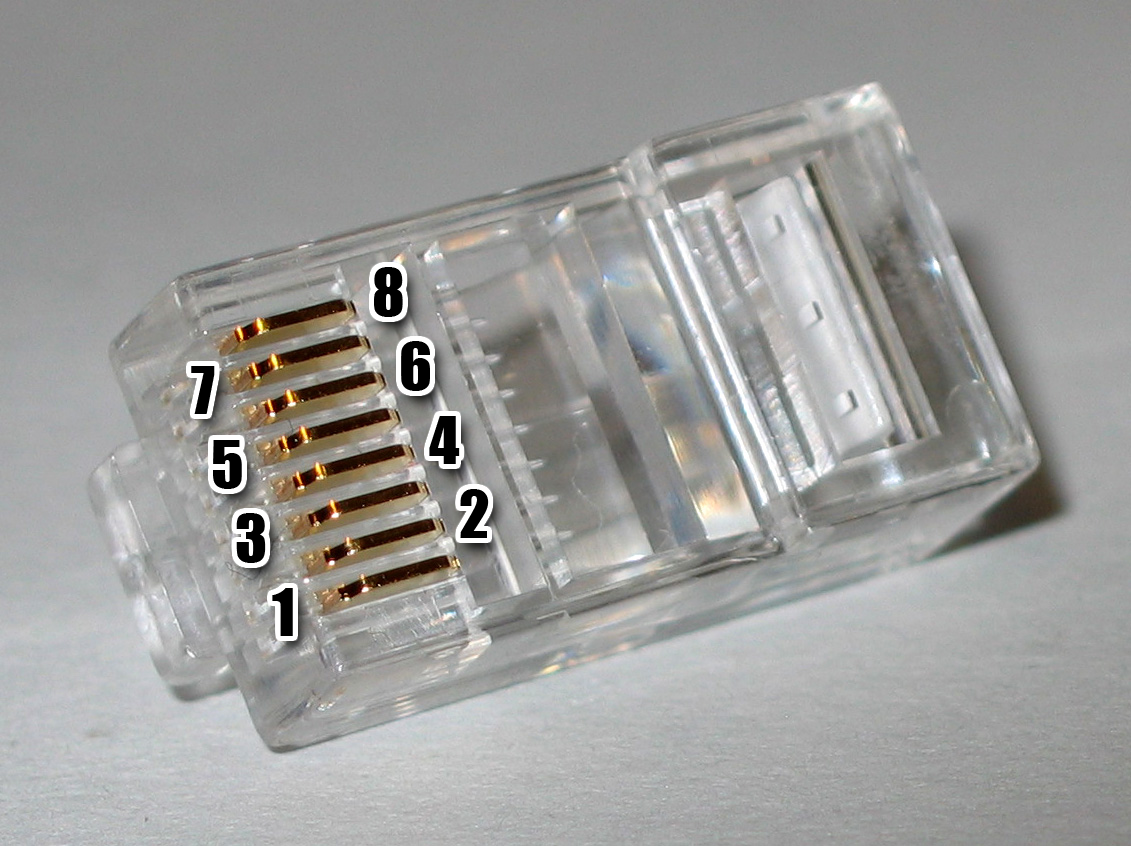The 10BASE-T and 100BASE-TX Ethernet standards use one wire pair for transmission in each direction. The Tx+ line from each device connects to the tip conductor, and the Tx- line is connected to the ring. This requires that the transmit pair of each device be connected to the receive pair of the device on the other end. When a terminal device is connected to a switch or hub, this crossover is done internally in the switch or hub. A standard straight through cable is used for this purpose where each pin of the connector on one end is connected to the corresponding pin on the other connector.
Use straight-through cables for the following connections: Switch to router, Switch to PC or server, Hub to PC or server PC or server to Hub
One terminal device may be connected directly to another without the use of a switch or hub, but in that case the crossover must be done externally in the cable. Since 10BASE-T and 100BASE-TX use pairs 2 and 3, these two pairs must be swapped in the cable. This is acrossover cable. A crossover cable must also be used to connect two internally crossed devices (e.g., two hubs) as the internal crossovers cancel each other out. This can also be accomplished by using a straight through cable in series with a modular crossover adapter.
Because the only difference between the T568A and T568B pin/pair assignments are that pairs 2 and 3 are swapped, a crossover cable may be envisioned as a cable with one connector following T568A and the other T568B. Such a cable will work for 10BASE-T or 100BASE-TX. Gigabit Ethernet (and an early Fast Ethernet variant, 100BASE-T4) use all four pairs and requires the other two pairs (1 and 4) to be swapped
Crossover cable pinouts
Certain equipment or installations, including those in which phone and/or power are mixed with data in the same cable, may require that the "non-data" pairs 1 and 4 (pins 4, 5, 7 and 8) remain un-crossed.
In practice, it does not matter if your Ethernet cables are wired as T568A or T568B, just so long as both ends follow the same wiring format. Typical commercially available "pre-wired" cables can follow either format depending the manufacturer. What this means is that you may discover that one manufacturer's cables are wired one way and another's the other way, yet both are "correct" and will work. In either case, T568A or T568B, a normal (un-crossed) cable will have both ends wired according to the layout in the Connection 1 column.
Automatic crossover
Automatic MDI/MDI-X Configuration is specified as an optional feature in the 1000BASE-T standard[1], meaning that straight-through cables will often work between Gigabit capable interfaces. This feature eliminates the need for crossover cables, making obsolete the uplink/normal ports and manual selector switches found on many older hubs and switches and greatly reducing installation errors. Note that although Automatic MDI/MDI-X is generally implemented, a crossover cable would still be required in the occasional situation that neither of the connected devices has the feature implemented and enabled. Prior to the 1000Base-T standard, using a crossover cable to connect a device to a network accidentally, usually meant wasted time troubleshooting the resulting lack of connection, but with this standard in place, that is no longer a concern.
Modern switches automatically apply an internal crossover when necessary. Besides the eventually agreed upon Automatic MDI/MDI-X, this feature may also be referred to by various vendor-specific terms including: Auto uplink and trade, Universal Cable Recognition and Auto Sensing.

No comments:
Post a Comment